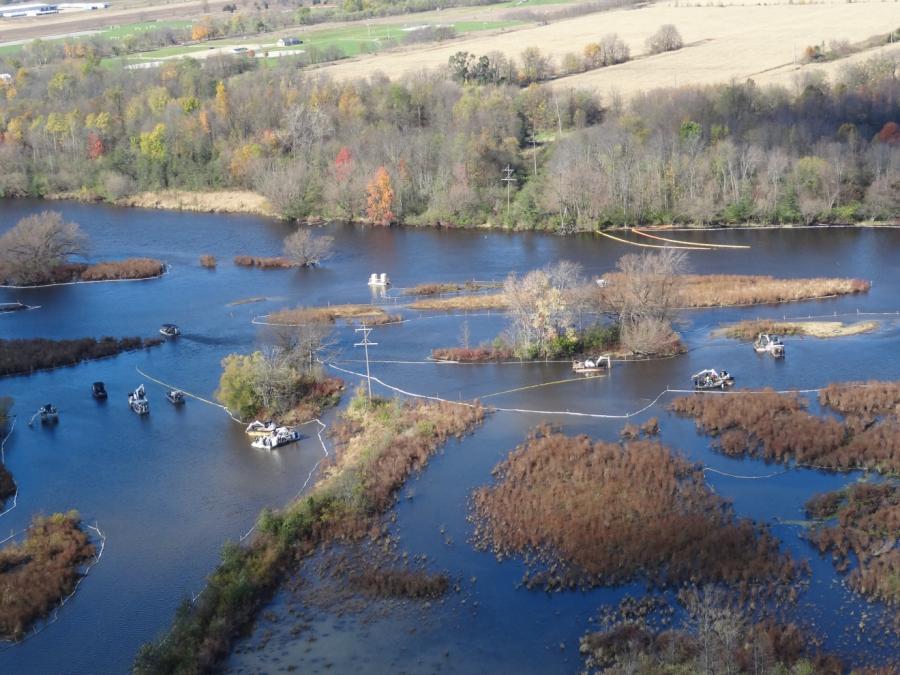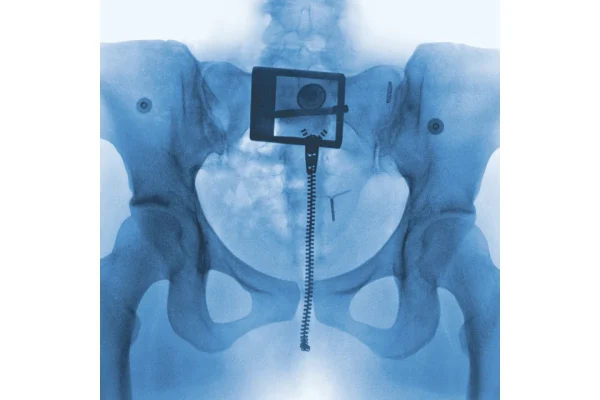Line 5, a threat below the surface
Any Michigander knows the greatest asset to the state is the Great Lakes. The Great Lakes generate more than 1.3 million jobs and $82 billion in annual wages. The draw to the Great Lakes also accounts for Michigan’s $17.7 billion tourism industry. To summarize, Michigan’s fresh water is directly linked to continued economic prosperity for the state.
However, there is a threat lurking 100 feet below the surface of the straits of Mackinac that could endanger Michigan’s most valuable resource.
This threat is from Canadian company Enbridge Energy and their dual pipeline. This pipeline, known as Line 5, became operational in 1953 and carries up to 22.7 million gallons of crude oil, synthetic crude and natural gas liquids per day.
Unfortunately for Michigan, Enbridge has a history of irresponsibility. On July 26, 2010 Enbridge reported a break in an oil pipeline in Calhoun County. The break resulted in more than one million gallons of oil to spill into Talmadge Creek and the Kalamazoo River — the worst inland oil spill in U.S. history.
More recently, Enbridge failed to report to Michigan officials that a boat anchor had caused damage to one of the pipes which was severe enough to cause a temporary shutdown of Line 5.
It is evident Enbridge Energy cannot be trusted to sufficiently oversee pipeline operation in the straits of Mackinac or anywhere else within the state. If Enbridge’s carelessness caused a Line 5 rupture, it would result in an unmitigated health, economic and environmental crisis unlike Michigan has ever seen.
A breach in this line would devastate 700 miles of Great Lake shoreline and take years to clean. In the past 50 years, Line 5 has already spilled 1.1 million gallons of oil due to leaks in the pipeline. Michigan does not deserve one more drop of oil in its lakes due to Enbridge’s incompetence.
There is also a huge risk to the health of residents if this pipeline is not shut down. The straits of Mackinac connect Lake Huron to Lake Michigan. A spill from Line 5 would compromise the drinking water for more than 35 million people who depend on the lakes for their water supply.
Additionally, a spill would cause an ecological disaster for the plant and animal species in the region. A study from Michigan Technological University researchers found that “a spill would release 32,000 to 58,000 barrels of crude oil into the Great Lakes and put 47 wildlife species and 60,000 acres of habitat at risk.”
Despite the clear dangers of keeping Line 5 in operation, some have argued that a shutdown would cause a hike in gas prices.
According to News Review, “The report commissioned by the National Wildlife Federation and C.S. Mott Foundation, found that rail transportation could effectively replace the energy supplied by Line 5 while increasing the price only by about 5 cents per gallon.”
Isn’t preservation of Michigan’s greatest asset worth a nickel?
In November 2020, Michigan Governor Gretchen Whitmer ordered that Line 5 be shut down. Since then, the state has been met with ensuing battles from Enbridge and the Canadian government. The dispute even reached the White House with the Biden administration announcing its unwise decision to not support the closure of Line 5.
The White House did announce the “U.S. Army Corps of Engineers is conducting an environmental assessment on Enbridge’s plans to encase the underwater portion of the twin pipeline in a deep, fortified underground tunnel.”
Today, the battle to shut down Line 5 is nowhere near a conclusion. As of Jan. 18, the Michigan government and Enbridge are in court arguing if the case should be heard by a federal judge or at the state court level.
Each day that passes with no outcome is another day that Michigan’s Great Lakes remain at risk. For those who have not been paying attention, you do not want to wake up one day and smell the oil. Shut down Line 5.









jerome • Jan 26, 2022 at 12:42 PM
It is not so much the increase in gas prices that many of us are concerned with (it would be much more than 5 cents) about but rather the impact the lack of cheap energy for those in the winter of modest means. If the price of gas you use to heat your house goes up even 5-10 percent many in the state would be unable to heat their homes. I remember many nights being able to see my breath as i went to sleep growing up.
So dont just complain about the “dangers of line 5” and propose a solution that doesnt leave many of us freezing to death every winter.
Nicole • Jan 28, 2022 at 6:34 PM
The state of Michigan offers assistance for low income households to help pay for their gas bills. Please don’t hesitate to reach out if you need help.
https://www.michigan.gov/mpsc/consumer/energy-assistance
jerome • Feb 1, 2022 at 12:44 PM
Why should we have to run to the government for help. I will not live off the government dole. Just leave us alone and we can take care of ourselves. Stop meddling with the OG industry, stop making statements saying you’re going to shut down the gas line causing speculators to buy up all the oil in anticipation of a shortage causing the prices to skyrocket. I am fine with safety requirements being overly robust as the great lakes truly are our greatest asset in the state but stop with these globalist environmentalist talking points about how the OG industry is killing the planet.
Jeffrey Insko • Jan 28, 2022 at 6:58 PM
No one is going to freeze in the winter; that’s an Enbridge talking point. Multiple studies have concluded that there are viable and affordable alternatives to Line 5 for propane delivery in the state. For example, https://www.watershedcouncil.org/alternatives-line5.html
Brian Little • Jan 30, 2022 at 3:41 PM
No one is going to be without fresh water either. whether there is ever a spill or not. There won’t be. This pipeline is one of the most carefully designed, engineered and constructed, the most often inspected, the most monitored, and the most often deemed safe in the country by the US government. Any inference to the contrary is just nonsense. The article uses selective facts and fear-mongering to imply that the pipeline is on its last legs. Nothing could be further from the truth. Let the oil flow.